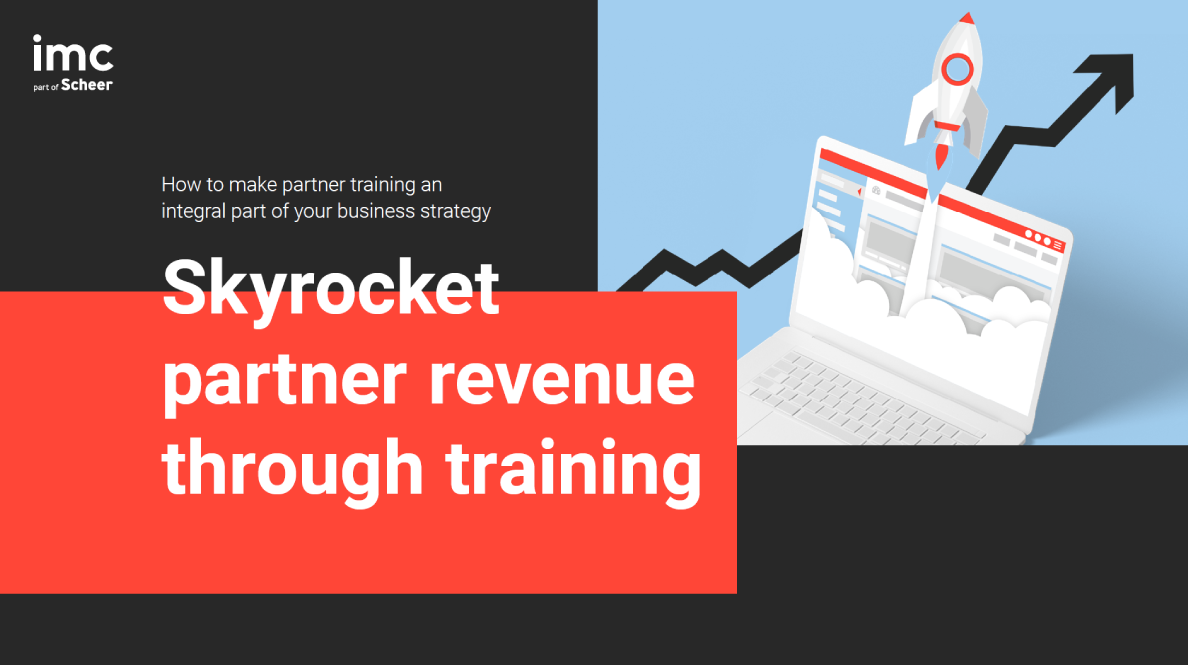
Why organisations should promote psychological safety
Psychological safety sounds like a fluffy feel-good topic: all employees should feel safe. But there's more to it than that. Psychological safety is a basic requirement for any organisation wanting to develop positively.
Earlier this month, I packed my suitcase and headed to SAP in Walldorf, where the Corporate Learning Camp was taking place – a 'BarCamp' conference on learning and development. I had been wondering whether I should hold a session at the event, but I couldn't think of a topic until I stumbled across a post on LinkedIn about "Psychological Safety" and its importance in learning organisations. As I'm passionate about culture, psychology, and lifelong learning, this was right up my street.

What are learning organisations?
In a learning organisation, all employees strive to expand their knowledge to keep up with changing circumstances. For example, organisations can respond to new market conditions and take advantage of new technologies and expertise.
What does this have to do with psychological safety?
Psychological safety sounds like an easy thing at first: everyone is nice to each other; everyone feels completely safe at work. But that's not all it's about. Psychological safety means that employees feel safe enough to address difficult issues, ask questions, ask for help, admit mistakes, give their honest opinions, and challenge the status quo. This is an absolute must for learning organisations because, without all this, ongoing development is not possible.
(Self-)awareness is the first step to improvement
If we don't talk about mistakes, don't ask questions, and don't make or accept suggestions for improvement, we cannot develop. And this is as true for individuals as it is for teams and organisations. What's more, we run the risk of making serious mistakes if we don't dare ask for advice. Serious mistakes can also occur if employees are afraid of voicing their concerns. These mistakes can be costly and even dangerous depending on the type of organisation or profession.
In other words, psychological safety isn’t just that we express our opinions, doubts, and questions honestly, but also that we listen to and accept feedback. Being open to asking and receiving feedback means we are able to go beyond ourselves – we are able to grow as individuals. This also means we must let those have their say who often hold back and usually just accept painful criticism.
A real openness to growth and learning takes us out of our familiar comfort zones. It puts us in the 'learning zone', as the American professor Amy Edmondson illustrates in a diagram. Edmondson is an expert on the subject and points out that the combination of psychological safety and high standards leads us into the learning zone.

How do we achieve psychological safety?
For a learning organisation, psychological safety isn't a one-off goal but a permanent condition that must be nurtured. It's an effort that requires all employees. Leaders can lead by example, e.g. by gratefully accepting feedback or openly talking about their own insecurities.
As a team, psychological safety can be strengthened by asking normally shy or reluctant colleagues for their opinions. If someone questions the status quo and makes suggestions for improvement, we should reflect on these suggestions self-critically instead of labelling the person as a complainer. Psychological safety is a question of team and corporate culture and must therefore be supported by all levels and lived out in our everyday work.
A topic that hits a nerve
I was not sure if this topic would interest the other participants of the BarCamp at all, but I gave it a try. Contrary to my expectations, interest and participation in the session discussion was so great, a second session was spontaneously scheduled for later in the afternoon. I had obviously hit a nerve.
Anyone who has a few years of work experience in different companies under their belt will already know what a difference psychological safety makes. Without this safety, we try to avoid mistakes, don't ask questions and avoid standing up or standing out from the crowd because it can feel unpleasant. But when we reach the learning zone, everyone rises above these psychological barriers that hold us back. If we want to be in a learning zone, we are all challenged. Every single employee contributes to the establishment of the learning zone. And everyone who took part in the session at the BarCamp agreed on this. For some companies, it takes a cultural change to create psychological safety. Is psychological safety just a fluffy feel-good topic? Not really. If companies want to grow and develop, they can hardly afford not to address this issue.

The author: Carlotta Pudelek
I've been a part of imc since 2017. As a product marketing manager for e-learning content and strategy consulting, I’m all about how individual solutions can help move organisations forward.
I'm also passionate about culture and mental health, which for me are closely linked to lifelong learning.
Let me know what you think about the article – I'd love to hear from you.

How brand training affects employee loyalty
New, cool brands as far as the eye can see. Their design: modern and to the point. Their appearance: bold and unusual. Their employees: committed and passionate.

What Tinder and Netflix have to do with the future of learning
The media user behaviour of people flocking to companies has changed compared to previous generations. And this has a direct impact on their workplace requirements and personal development opportunities.

The Great Upskill
92% of workers favour an employer with the best L&D
The Great Resignation caused a major shift in personal and professional priorities among employees. Our recent industry survey identifies a new growing trend, 'The Great Upskill'. It emerges as the natural evolution of the Great Resignation, as people seek greater fulfilment in their working lives.
Aside from a greater expectation of flexibility, employees now want to work for employers that help them to enrich their working experience through ‘upskilling’, training, personal and professional development. Employers are responding by creating engaging career paths for the short, medium and long term. In return, a staggering 92% of workers favour an employer with the best L&D.
We wanted to find out more about this trend, and find out whether people are actually motivated to engage with training, and whether businesses are accommodating and using that motivator in an ever-changing workplace.
The absence of L&D drives employee disengagement
In response to The Great Upskill trend, we conducted research in partnership with independent survey company Research Without Barriers. Our aim was to investigate employee attitudes in relation to training. We selected our research demographic to obtain rounded insight from a cross-section of UK workers, primarily in office-based roles.
To this end we surveyed 2,000 UK workers, split between 1,000 managers and 1,000 non-managerial employees. The surveyed managers have over 15 years of work experience and work in companies of more than 15 employees. The surveyed non-managerial employees have a maximum of three years of experience, and work in companies with more than 15 employees. The goal of these sample requirements was to give us better insight into the attitudes held at different levels of seniority.
The Great Upskill is all about employees seeking greater fulfilment and engagement in their working lives. One of the key factors at pla is the pursuit of personal and professional development. While traditional workplace benefits relied on 'quick wins', such as team socials, employees now seek for greater meaning in their working lives. Our research found that 86% of employees would choose to stay with their employer for longer if they were offered frequent learning opportunities. This preference demonstrates that L&D is a major priority and motivator for employees and managers alike. Employers who understand this fact can benefit amid the Great Resignation and the rise of employee disengagement, i.e. 'quiet quitting'.
The findings show the impact of this trend on employee retention.

52% of employees left a role because of a lack of training
A staggering 52% of employees admitted that they had left a role due to the lack of development opportunities. This clear indicator shows that there is a practical and real-world impact of this trend. And HR departments are seeing impact extend to the recruitment process. In fact, 92% of workers surveyed reported that, if choosing between two potential employers, they would choose the employer who offered the best learning and development opportunities.
Our research also found that, despite the rising priority of training for workers, employers are not necessarily addressing this issue through frequent training. In fact, 48% of employees said they had not received training in the last 12 months. In addition, 22% of managers reported that they did not receive as much training as they would like.
Impact of L&D on employee engagement and business ROI
Our goal with this research project was to better understand the Great Upskill trend. It gives us our greatest insights yet into the attitudes that have developed in the workplace in the aftermath of furlough. These attitudes are what's behind the rise of remote working and shifting social attitudes.
Businesses may be tightening their belts due to recent economic uncertainty. But our research indicates that in terms of real-world impact, training is one of the most beneficial tools a business can utilise to safeguard their workforce and optimise employee engagement. As well as reducing employee turnover, training supports recruitment and increasing employee engagement. What's more, 81% of managers surveyed as part of our research project found that training had a positive impact on their business's bottom line.
The insights from our research are fascinating and demonstrate a clear social trend around The Great Upskill, and UK media agreed. We secured six news features relating to this research and trend, including in:
Want to foster a learning culture at your organisation?
Get in touch with us to talk about your L&D challenges, aims, and strategies – we'd love to hear from you!

Leadership Training: When the Boss Takes the Learner’s Seat
Improving leadership ability through effective training
Our perceptions and expectations of leadership personnel have changed a lot in recent years. Today’s managers are expected to have both subject expertise and good people skills. Subject expertise can be learned, obviously, but what about the people stuff – the soft skills?
Managers are expected to be able to see things from the employee’s perspective and respond appropriately. The requirements go far beyond merely delegating projects and issuing instructions. The usual hard skills need to be tempered with empathy and judgement in dealings with staff. And that’s where our experts can help – by designing leadership training courses.


Kathrin Heidler, Instructional Designer at imc
Kathrin Heidler has a degree in education, with a major in digital learning. Since 2020 she’s been an educational designer at imc, designing digital learning formats, blended learning strategies and web-based training courses. And she has a strong focus on leadership training. “For me, leadership means empathy for staff, backing your team – both internally and externally – and having technical expertise,” she says. “These are all things you can train for – the hard skills, obviously, but the social skills too. What I find exciting is to dive deep into the ‘how’ of that.”
“Leadership training” is not the same thing as “management training”
Heidler explains that at imc, leadership training means focusing on and learning the core competencies of effective leadership. It relates exclusively to non-technical skills, like communication, empathy, organisational and methodological competencies, and other soft skills.
Management training, on the other hand, relates to learning about new products, specific processes or strategies. It’s about acquiring knowledge and technical – or “hard” – skills.
Both types of training can be combined, of course, but they are generally intended for two different target groups:
- Employees new to leadership roles who need to learn the necessary people skills and understand their company’s mission.
- Employees already in leadership roles who need to learn new strategies or acquire new technical knowledge at the managerial level.

However, in both cases, the leaders concerned are generally time poor when it comes to learning. “Leadership personnel are always on a tight schedule, and time is always a big challenge for them,” Heider explains. “That’s why it’s vital to be efficient and find out in advance exactly who needs to do what training. This is especially true for management training courses.
In these cases, I like to work with our KPI-based Readiness Check. It allows me to gauge each learner’s existing knowledge level so that I can suggest appropriate content and learning options. That saves a lot of time and frustration.”
Success hinges on having clear parameters and expectations heading into these courses. “Both parties must have a realistic understanding of the basic requirements and constraints. And by both parties, I mean the company seeking leadership training, and us as their strategic partner,” Heidler explains. “What’s to be learned, and how? Realistically, how much time is available for the leadership training? Only by having clear objectives can we achieve successful training outcomes.”

“Effective course design is about getting from the aspirational to the factual”
Katrin Heidler has already supported numerous customers as a strategic sparring partner for the design of leadership training courses.
“Given all the hype around leadership and management training, I make a point of focusing the client on the basics,” she explains. “So, at the start, we stay very analytical and nail down things like exactly who the target group is. What defines the group? What is the learning objective? What specific actions and behaviours is the course supposed to teach?
“It’s not enough to simply say, I want to make the managers more agile. I have to be able to specify exactly what actions constitute agile behaviour. Breaking it down to specific actions enables the courses we design to achieve the desired outcome of better leadership ability.”
When designing leadership training, start by writing a list of core competencies and mapping those to specific types of action. This will provide clarity around what’s expected of the training because it provides a bridge from aspiration to facts and actions.
Choosing the right learning formats
Modular learning nuggets:
learners can complete a training session in just 10-15 minutes
Performance cards as digital flashcards:
Learning content can be presented in a short and punchy way
Virtual classrooms:
Time is blocked out directly in the learner’s calendar; this format does, however, require a trainer
Hot curriculum picks for leadership training
In closing, we asked Kathrin Heidler to give us her picks for learning objectives for leadership training in 2023:
“Leaders need to be aware that we’re in a time of economic and demographic change. And they need to be confident and sure – not fearful – in dealing with this change. They should continue to work on their own technical skills. Last but not least, they need to see their staff as people, with all the needs that being human entails. That would be my learning recommendation.”


Can Germany afford its current AI scepticism?
Artificial intelligence (AI) is often viewed sceptically in Germany, but often without justification. In this interview with Kristian Schalter, we talk about how future technologies will change our working world.

AI in Corporate Learning
There are many fears about the topic of artificial intelligence (AI). But especially in corporate learning, AI can be a great help.

Contact person
I joined the imc newsroom team in 2021. As a journalist my heart beats for content and storytelling.
I’m excited to figure out how e-learing and digitization affect the future of work. My task is to create content to talk about and I’m always looking for trends.
Privately I love to travel and eat Tapas.
Topics: E-Learning Trends, Corporate Social Responsibility, Press and Influencer Relations
Learning culture nourishes learning ecosystems
Why learning ecosystems need more time and room
When employees are looking for suitable learning resources, they can often choose from a wide range of contents and formats. This can often make finding learning content that meets the specific requirements time-consuming and inefficient.
Technology can solve this issue. A learning ecosystem links several learning platforms and presents the formats and contents clearly in the learning portal.
Many organisations already utilise learning ecosystems, especially larger companies. A learning management system (LMS) often serves as the foundation. This becomes an ecosystem with the integration of additional platforms and tools, such that both internal and external sources feed into search results.
But what good does a solution based on the most advanced technology do, if it is not well received by the learners? User acceptance relies on a corporate or organisational learning culture that is fit for the future.

“In future, personal and professional development will go hand in hand”
It is not the addition of content that makes a learning ecosystem grow, but its expansion through tools and systems. Fundamentally, that means opening up the LMS and integrating external platforms with external content to create a basis for the development of an ecosystem. Yet, that takes courage!
What happens when companies take the leap and hand over control of their learning system? “Responsibility is transferred to the employees,” says Sven R. Becker, Member of the imc Executive Board. “Thus far, the senior management typically dictates corporate learning, which gives it a regulatory character. Yet, experience shows that the company’s success depends on how much learners are involved. A learning culture transformation has to start with the workforce and grow from there. That requires a mindset shift but should be the clear goal.”

Customised learning paths can be a solution when implementing this, as they help to address personal requirements in a more targeted manner: “In future, personal and professional development will go hand in hand. Different learning systems and achievements must be recorded and stored automatically,” says Andreas Pohl, Director Research and Development at imc. “That facilitates the creation of tailored, custom learner profiles which enable learning across the boundaries of a specific organisation.”
Acceptance and motivation are the first step
“No appointments today – I’m learning.” Is it possible to write that without earning funny looks? Making it possible is a key task for modern companies. Learning and professional development must lose the “necessary evil” or “seminar as a benefit” labels and be anchored as a vital component of corporate culture. One option is to specify professional

Good content can boost the motivation to actually use a learning ecosystem. Sven R. Becker explains: “One trend that is clearly set to stay is gamification. Yet, that alone is no longer enough to win over the new generation of talents. Engaging activities and formats are needed. Getting the mix right is important. A good, blended learning experience is marked by variety – it offers something different. Great stories are remembered and motivate the learner to continue.”
Employees need time and room for creativity to leverage a learning ecosystem
Companies like Microsoft already utilise learning days, learning time, and learning sabbaticals – with great effect. Similarly, the appointment of learning ambassadors has proven successful for several customers of ours. In the automotive sector, some companies have transformation guides who are trusted by their colleagues, putting them in a position to help create awareness for professional development.

Sven R. Becker firmly believes that the strongest ambassador for any measure is the person most critical of it: “If you succeed in changing the view of the strongest opponent, you gain the greatest multiplicator in the company.” Several imc customers have achieved great successes with the learning ambassador model, says Becker.
Learning that is independent of location and time constraints also makes it easier to access the system. That is why it should be equally available from mobile devices and from the workplace.
User generated content – Quick and easy, from creation to publication
An ecosystem keeps growing continuously. Authoring tools are a great option for adding content and knowledge straight from the in-house expertise, as they allow any user to share their know-how.
This turns the learner into a purveyor of knowledge. In that role, they assume responsibility within the system – which will also boost their own motivation.

The technology already provides for this. All that is left to do is to get the learners’ buy in. While that may seem like a monumental task, these initial key steps will get your company on the right track:
- Take the leap and expand your learning ecosystem
- Create acceptance for professional development
- Create a great learning experience with motivating content
- Offer time for learning
- Enable employees to help shape the learning experience
- Not trying is the biggest mistake you can make!

Learning Ecosystems: A Universe of Learning
If you want to use a learning ecosystem successfully in corporate learning, the technical requirements must be right. Time to shed light on what systems have to fulfil in order to be able to meaningfully map a genuine learning ecosystem.

Future of Work: Interview with Çiğdem Uzunoğlu
Competence transfer thanks to digital games? It's possible! In an interview with Çiğdem Uzunoğlu, we explain how computer games and continuing education fit together and how they can be used effectively.

Contact person
I joined the imc newsroom team in 2021. As a journalist my heart beats for content and storytelling.
I’m excited to figure out how e-learing and digitization affect the future of work.
My task is to create content to talk about and I’m always looking for trends.
Privately I love to travel and eat Tapas.
Topics: E-Learning Trends, Corporate Social Responsibility, Press and Influencer Relations, New Work

Learning Management Systems for Membership Organisations - Key Features to Look For
Here we look at the unique requirements you should look for in a learning management system (LMS) for membership organisations, in order to make your platform effective for current and future training needs, while improving many other aspects of member administration.
Over the last few years, many professional bodies and trade associations have added online training, services and member benefits via an LMS to supplement their offline offerings.
However, as everyone is becoming more tech savvy and comfortable in doing more of their business and social networking online, many membership organisations now conduct the majority of their communication via an LMS or online portal, with some even being primarily or entirely run online.
Add to this the need for social distancing and remote communication while the coronavirus pandemic continues through 2021, and many membership organisations need an online hub to be able to function at all.
Often, generic LMS solutions can technically be adapted to meet the needs of a membership organisation with some custom development work. However, choosing one that has this use case catered for by design (rather than being very focused on training internal company employees) can save a lot of hacking around and headaches.
At imc, our Learning Suite has been developed with membership organisations as a key user-type, making it easy for administrators to organise training, certifications, CPD / CE, online communication and much more.

LMS key features for a membership organisation
These are some of the key features we have worked to continually improve, and that we recommend you look for when choosing the best LMS for a membership organisation like yours:
CPD / CE
Many professional membership organisations require a level of Continuing Professional Development (CPD) / Continuing Education (CE) for members to demonstrate their commitment to staying up to date with the latest industry information and best practices.
Therefore, a good membership LMS will help both users to follow and record any points-based training, whether conducted online or offline, while enabling administrators to signpost suitable courses and content.
Social Learning
While the typical LMS for employee learning and development will be set up to deliver on the top-down training requirements in line with a company’s business and compliance needs, many people join an organisation for the benefits of expert instructor and peer to peer support.
Therefore, a membership LMS should facilitate group chats, threaded discussions, and many of the content liking, sharing and commenting features that users will be familiar with from social media platforms like Facebook, Twitter and LinkedIn.
Multi-Tenancy
Membership bodies, especially larger organisations, may have multiple types of learners, each with their own needs in terms of features, as well as content. For example, there will be the members themselves - who may form one or more type - there may be the organisation’s own staff who need training and their own ongoing support and development, and there may be external partners, such as affiliates and 3rd party training companies.
A multi-tenancy LMS like imc Learning Suite allows you to use a single learning platform instance to create distinct learning environments for each of your audiences. Each group sees only their self-contained learning experience, which can be tailored to their needs in terms of content, hierarchies, active features, and even branding.
Learn more about multi-tenancy here.

Low-Cost Scalability
Many trade associations and membership organisations, including some of our clients, have tens or even hundreds of thousands of members. Therefore, you’ll want to make sure your LMS can scale with you to large numbers of members without costs spiralling out of control.
Unlike online training for company employees, many organisation members will need to stay enrolled but may be relatively passive - perhaps not active at all for many months or longer.
Therefore, the pricing model used within an LMS for membership organisations should be tailored to or flex to reflect that lower level of resource usage seen within a typical corporate LMS that will be priced based on users / active users.
Software Integrations
Of course, there are many moving parts within a membership organisation, with training being just one of them. Admin time is therefore a potentially big expense, so management of member data should be as seamless as possible across software platforms for CRM, email, video conferencing, finance, multimedia content and more using APIs.
For example, imc offers easy integration with popular 3rd party applications such as PayPal, Shopify, GoToMeeting, Microsoft Teams, Linkedin Learning and Salesforce.
It’s this streamlining of software products that enabled the RIBA (Royal Institute of British Architects), who have 47,000 members worldwide, to go from 5 different systems for attendance bookings, training content, email notifications and more to managing everything within their LMS.
Adaptive Learning
Keeping content relevant and fresh is key for learner engagement with your content. Adaptive learning capabilities within your LMS helps to intelligently assess learners’ existing competencies as they progress through training content. It will guide them to what they need to learn and improve on, and reduce the repetition and frustration that can come from ploughing through training where they are already capable.
eCommerce
LMS ecommerce functionality enables a membership organisation to deliver self-service enrolment, and purchase of individual or group courses, event attendance and more.
For larger organisations especially, this can greatly reduce admin overhead and bring significant cost savings. Look for integrations with popular ecommerce payment gateways, such as PayPal and Shopify.

Virtual Conferences
Prior to the Covid-19 pandemic, many events were already moving to a hybrid model in order to reduce the need for travel and open themselves up to a much wider audience.
Having virtual conferencing capabilities within your LMS allows you to quickly and easily set up and deliver tradeshows and member events at a fraction of the traditional cost and logistics. They can even be recorded and made accessible for any timezone, and open up discussion forums in moderated groups.
Content Creation Tools
Specialist learning and development teams will often create elearning content with popular software, such as Articulate, and make it available within the LMS. However, a membership organisation will often have tens or hundreds of subject matter experts who could be sharing their valuable expertise with the community.
An easy to use learning content development tool, like our own imc Express, can enable experts with no formal learning design experience to create and share training materials all within the LMS ecosystem. This can greatly reduce the time and expense of rolling out new training.
User Hierarchies
A large membership organisation will often have various levels of management, and local area leaders governing and supporting members within their group.
An LMS that is purpose built with membership organisations in mind will allow you to easily create hierarchies with differing levels of permissions, reflecting your own organisational structure.
Analytics & Reporting
Many membership organisations will have one or more overarching objectives supported by projects and events running across a year. A good LMS will enable you to easily create custom reports, giving you clear visibility of progress against overall and group targets.
Detailed analytics will enable you to laser in on groups or individuals that need additional support, as well as high-performers who could be earmarked as future leaders.
How we can help membership organisations like yours
If you’re involved in the running of a membership organisation and are looking to improve training delivery or reduce the time and expense of managing multiple software platforms, then the above checklist of features could help you leverage an LMS.
With the imc Learning Suite, we’ve helped a wide range of membership organisations, such as the ACCA (Association of Chartered Certified Accountants) and the Australian NRL (National Rugby League) to manage many areas of their member administration - not just training - all within the single ecosystem of their LMS.
If you’d like to discuss how an LMS could benefit your organisation too, contact us at imc for an informal chat about your requirements.

Multiple portals, one system
A multi-tenancy LMS is a single learning management system instance that serves various learner groups with differing training needs.

Training external audiences
The concept of training external audiences like members, is often referred to as Extended Enterprise Training. But what is an extended enterprise?
Contact person

Why companies cannot afford to skip training their external partners
Only considering your own workforce when planning your training is short-sighted. After all, distributors, franchisees, agents, brokers, as well as association members and even volunteers contribute to corporate success just like your in-house employees.
Consequently, these external partners need to know all the details of your company’s products and services. In this article, our experts show how to set online training up for success in such an extended enterprise learning scenario, and how to turn a learning curve into an earning curve.
Revenue losses through deficient distributor and network partner training
To understand “partner training” let’s picture the following scenario: A manufacturer of glasses and other optical aids is launching new contact lenses that are particularly thin and suitable for sensitive eyes. First of all, the company’s own sales staff need to know the benefits of these contact lenses, as they sell the products either directly to the customers or to other companies like Company B.
If the products are sold on via a trading partner as an additional distribution channel, the sales consultants employed by Company B also need to know the particularities of the new lenses. The crux: You can only sell a product if you know its benefits. This holds true even more when a trading partner sells products from more than one provider and has several suppliers.

NOTE
Distributors, trading partners AND external sales people all have the same need for specialist and product knowledge. Leaving out this target group when arranging learning and development measures is a missed opportunity for significant revenue growth.
Which target group should an extended enterprise training scenario take into account?
The circle of distribution partners includes more than just external sales employees. Depending on the sector and the orientation towards B2B or B2C business, a completely different set of target groups should be addressed and included. For example:
- Distributors and dealers (car dealerships, opticians)
- Franchisees (restaurants, insurance companies, real estate agents, etc.)
- Specialist staff in the insurance, health or medical technology sectors
- Joint ventures
- Partners
- Customers
- Members and voluntary staff
- Friends and family
- The general public

Sales training for external partners: online or in person?
Once the external partner network has been defined, the question is: Is it better to train these employees online or in person? Both options have advantages and disadvantages which need to be balanced precisely. The idea to present such distributor training online – for instance, in a learning management system (LMS) – is not new.
The benefits are obvious: Instead of sales consultants travelling to attend on-site training, all employees ultimately involved in selling the product can complete relevant product training in the convenience of their home or their workplace using various devices. For instance, an optics manufacturer placing their products with various chains can provide remote access to the product training to all sales staff of those chains’ branches.
However, the drawback of such online training is that employees are often under time pressure or lack motivation to get started with such training. It is therefore crucial to minimise any barriers to entry for training measures.
For instance, complicated registration processes act as a deterrent. Combined online and face-to-face training within a hybrid learning concept or even a true blended learning scenario may also be suitable options.
Having assisted numerous imc customers with the development and support of such training, training expert Anika Rabe recommends:

Anika Rabe
“Most of the time, product training is not designed for the general public and must therefore be set in a secure area. An LMS is a suitable option for this.
Yet, the training courses must be easily accessible for everyone and, above all, they must be interesting. In particular, external employees must be involved on an emotional level rather than stopping at technical product knowledge.”

Facts tell, stories sell
No emotion – no sales. Especially when technical differences between products or brands have no major impact, brand loyalty and great storytelling are key.
An external employee needs at least the same degree of emotional investment as a team member of the manufacturer - they must both convey enthusiasm for the product. That is exactly what product training needs to deliver. Items like smartphones, jewellery or cars are frequently bought for emotional reasons, rather than based on mere facts.
If a sales consultant can share their enthusiasm for a product, customers are more likely to buy it – even if, objectively, it is not better or cheaper.

One size fits all is a thing of the past
The training that helps external partners internalise these stories differs from that most helpful to your own employees. Internal team members already have a special connection to the brand or the products. They already believe in the quality standard, and need not be won over.
This is an important aspect to take into account. One-size-fits-all solutions no longer have a place in training design – and even the best training will fail if it is unnecessarily difficult to access. This is why training expert Anika Rabe recommends: “Making it easier to access learning means making it more likely for the learning experience to be shared by everyone. For example, adding a QR code to products that are new or involve a steep learning curve is easy, and can be used to direct the user to the relevant training course with a simple scan.”
However, Anika notes that simplified access also makes it harder to verify training. If a training course requires no prior authentication, the creator of the learning content cannot know with certainty whether the end user really completed it, nor how much time they invested. It also remains unknown how much the learner actually learned, and whether they actively apply that knowledge.
Yet such assessment is important, especially when optimising and evaluating learning content. While in-depth learning analytics would be taking things too far in this context, it is a topic L&D managers should keep an eye on.
Combining both worlds to boost sales
According to Dr. Wolfram Jost, Board Member and Head of Product Management at imc, the only thing that really matters in the end is this: The learning curve must be transformed into an earning curve. No company trains employees just for fun – whether that is internal employees or external partners. Especially in the extended enterprise learningscenario, the fundamental objective is to increase the company’s sales. Partner training must contribute to corporate success.
It helps to keep these key questions in mind when designing your extended enterprise training to transform the learning outcome into revenue.
- Objective: What is the training designed to achieve?
- Target group: Who is meant to be trained? What prior knowledge does my target group have? What information and which stories do they need?
- Conceptual design: What type or combination of training is suitable?
- Performance assessment: How do I define success? How and when do I measure it?
- Training access: How can I simplify training access?
- Learner motivation: How can my training design ensure that external partners enjoy the training process and retain the learned content?

Onboarding, slightly different
Onboarding can already be integrated into an existing LMS, but this benefit is hardly ever used.
We took a little trip into the (near) future to see what a successful onboarding process could look like.

Why the gains from an LMS outweigh its costs
A Learning Management System too expensive? Not if you use it in the right way! For most clients, an LMS pays for itself within a year. We tell you how to prove that with a Business Case.

More about our LMS
If you would like to learn more about imc's Learning Management System, check here for more information.

Contact person
I have been working in the Marketing & Communication Team at imc since March 2019.
Communication, creative content and social media are my passion. "KISS - Keep it short and simple" is my credo.
To explain complex content in an understandable way and thus make the topic of e-Learning accessible to everyone is an exciting challenge every day.
Privately I love to read, play poker and travel a lot.
I am always happy to receive feedback or suggestions.

Never file folders again!
How a validatable LMS significantly saves on time and paper
An interview with a representative from the medical technology industry
There will always be challenges to face when converting or introducing a Learning Management System (LMS). However, it becomes even more difficult if the learning platform also needs to map validatable processes. This is a particularly important issue in the medical, pharmaceutical and medical technology industries, as work processes and training courses must be fully documented. We spoke with a representative from the medical devices industry who recently made this type of changeover.

Hans-Heiko Müller, Team Manager for Organisational Learning at pfm medical ag
Hans-Heiko Müller works for pfm medical ag, an internationally operating medium-sized family business from Germany that offers special solutions in the healthcare sector. As Team Manager for Organisational Learning, he is responsible for the documentation of internal training and professional development.
He had already been working with imc's LMS and the imc Learning Suite since 2014 and initiated and oversaw the company's conversion to a validatable system. In this interview, he tells us how the conversion went, what challenges he and his team faced, and how many metres of DIN-A4 folders he now saves.
INFO
The term validation or validation obligation means that detailed evidence that a technical process has complied with requirements must be documented. Simply stated, the aim is to assure the quality of a product in order to prevent serious errors. This is extremely important for eliminating the endangerment of patients in high-risk industries such as the pharmaceutical industry and the manufacture of medical devices.

Hello Mr Müller, please tell us: What do validation processes and learning management systems have to do with each other?
The European Medical Device Regulation MDR and the U.S. Food and Drug Administration FDA impose very strict requirements for this. These requirements state that, if a computer-aided system is integrated into a quality-relevant manufacturing process, documented evidence of this must be provided.
This evidence must show that the system meets the requirements and will perform exactly as specified, both now and in the future. In other words, the system, or in our case the LMS, must be verifiable at all times, and every process must be clearly traceable. This applies, for example, to any changes made to training materials.
At pfm medical, you decided to take the step towards a validatable LMS in mid-2020; how did this come about?
There were several reasons. For one thing, we have to meet the legal requirements, and the European Medical Device Regulation, which was enacted in 2017 and is mandatory as of May 2021, included some innovations that had to be implemented.
Another consideration was the fact that, generally speaking, documentation prior to validation was very time-consuming. We had to carry out a great many procedures manually.

How can I picture this manual documentation?
Basically, all employees must complete certain training courses, for example professional development courses on the individual products. Depending on the type of training, it may need to be repeated or renewed on a regular basis.
Before the conversion, the documentation worked like this: We manually enrolled an employee in the course, and they were able to complete it either online in the LMS or in person. Afterwards, they had to print out a certificate showing that they had taken the test, acknowledge this with their signature and either submit the slip in person or send it by post.
After receiving the letter, we had to check whether the employee was really enrolled on this course and confirm their participation manually in the system. Because we are required to keep these records by law, and in some cases for decades, we manually filed the supporting documents in paper folders.
This added up to about ten running metres of DIN A4 folders within two years. My colleague and I spent several hours each week comparing and categorising. This standard procedure, which is the order of the day in many companies in the medical technology sector, ties up a lot of resources.
That sounds very cumbersome indeed. What does this process look like now with a validatable LMS?
All employees are assigned to different groups, and I can book these groups in specific training courses and onto specific learning paths. The additional professional development courses that are relevant for validation are also found there.
Let's take the example of medical device consultants who have to instruct doctors on our products. If I specify that the group with all consultants must attend a training course on the latest products every year, the system automatically books the entire group into the appropriate training courses. I can also set automated reminders (called escalation management) in the system. This will send a reminder to those who have not completed the training course by a certain time.
Once the employees have completed the course, they can log it directly into the system. To do this, they have to be logged in with their user name and password and also confirm their participation with their electronic signature (e-signature). That's it. We can then see when the employee has completed the training course, and the certificate is stored in the system. We don't have to print anything out or file anything extra.

Can you give us some insights into what was important to you when selecting a vendor?
We not only wanted support with the conversion of the system, but also help with the documentation going forward, because with every update, with every small change I make in the LMS, the potential impact of the change has to be documented. This is extremely time-consuming, and each update quickly adds up to 100 pages.
Theoretically, we could also do this work ourselves, in other words, run through all the scenarios completely and document them. However, I would need to hire at least one full-time employee to do this. We wanted a "comprehensive, worry-free package" that would not only cover the issue of security, but also make our work considerably easier.
What was the actual conversion process like?
First, we worked with imc to create a requirements analysis of the company's learning processes. This involves such aspects as the organisational structure and the structure of the learning content or learning processes. This was followed by the reconciliation of validation documents and the provision of user requirements and functional requirements including risk analysis.
Then, in the planning phase, we were provided with a development system (DEV system) for initial workshops. In the workshops, for example, the administrators were trained, and we set the system up and used it on a test basis together. In the third phase, a test system, or STAGE system, was put into production, and this in turn was tested. This was followed by the deployment of the productive system.
The process took just under four months altogether. If we had done it completely on our own, it would have taken us an estimated 18 to 24 months.
Did you have any fears or anxieties about the conversion beforehand? How did you deal with them?
Of course, we had respect for a project of this magnitude. But we saw the conversion as an opportunity to bring the old world into the digital age. For example, we took another look at all the processes and checked to see where they could be streamlined.
As a result, we now have training processes that are uniform for all employees, including those of our subsidiaries. There was a real change in culture which was also initiated by the fact that we worked with so many different departments.
At the same time, this presented a certain challenge, in that we first had to find out which "language" everyone spoke. Terms such as system or DEV system can be interpreted differently by each department. For example, since we worked with HR as well as IT, it was immensely important to make sure that everyone knew what was meant by which term. Clear agreements and a regular exchange are essential for this.
Were there any other challenges?
Personally, I didn't find it easy to relinquish some of the responsibility and rely on an outside vendor, because as I mentioned, I had already been working with the LMS since 2014, knew how it worked, and could make changes myself.
During the conversion, however, it was the provider, and not I who worked on the system. In a way, that was a leap of faith, because I didn't know exactly what was going on in the background. It made me a little nervous at first. However, we agreed on short sprints, in other words, weekly coordination meetings with the possibility of readjustments, so that I was reassured and could follow where we were in the process at any time.
However, you should be aware that you lose some flexibility with this sort of system. Changes that I could previously make myself with a check mark are now locked and have to go through a change process which has to be applied for, checked within the context of a four-eyes-principle and documented before it can be implemented. This strict process ensures the prescribed safety, but the price is less flexibility. Still, the advantages clearly outweigh the disadvantages for pfm medical.

What would you recommend to companies facing the decision to have their system changed?
My advice: You have to take a careful look at the processes in advance and then have the courage to adapt them to the technology. Not the other way around. This way you can be sure that there will be no problems during audits.
Thank you so much for all your insights!
Further information
Curious to find out more about pfm medical's validatable LMS? Then check our reference page.
Or download the whitepaper about how to master validation with an LMS.
Not enough? Then watch the webinar recording with Hans-Heiko Müller related to the topic validation in a LMS (German only).

How not to break bad with validated processes in an LMS
What requirements must an LMS map for validated processes? And how does Breaking Bad fit here? Questions about questions not only the Pharmaceutical industry should think about.

Learning Analytics: It comes down to the right questions
Learning must not be an end in itself, but fit in the company’s business outcome: More and more managers are demanding this. We therefore looked at how L&D managers can meet this requirement with the help of Learning Analytics.

More about our LMS
If you would like to learn more about imc's Learning Management System, check here for more information.

Contact person
I have been working in the Marketing & Communication Team at imc since March 2019.
Communication, creative content and social media are my passion. "KISS - Keep it short and simple" is my credo.
To explain complex content in an understandable way and thus make the topic of e-Learning accessible to everyone is an exciting challenge every day.
Privately I love to read, play poker and travel a lot.
I am always happy to receive feedback or suggestions.

Digital Learning Journey: I am packing my suitcase. What I take along...
The key items one should never forget on a digital learning journey
Dear E-Learning Punk friends, one year of corona, one year without a holiday. Do you remember back when it was possible to travel the world with ease?
Cocktail in one hand, a good book in the other. Feet in the sand, sun on your face, looking at the roaring sea. That’s how many of us remember the perfect holiday. But there are many other ways to travel: From city breaks through backpacking tours to cruises, there’s something for everyone. The same applies to a learning journey.
What exactly do you need to pay attention to when planning, preparing and going on this journey? Over a nice cocktail, we asked travel guide and expert Eva Lettenbauer to offer some tips and hand you a checklist.

Planning a learning journey – What’s the destination?
Am I going on to explore far-flung places, or do I return to the little finca at the edge of the fishing village in Mallorca? We often go into holiday mode as soon as we start planning our trip. But we do have to decide on the destination.
Similarly, we need to figure out what digital training is meant to achieve for the company. What corporate goals is the training geared towards? What performance goals are being pursued? What exactly do we want to bring across? Should the training focus on background knowledge? Practical application? Sharing experiences? The more clearly you can define where you want to go with this journey, the more effectively you can leverage the different learning formats.

Everyone goes at their own pace on holiday. One person might want to see all of Paris in a day, while the next person would rather watch the hustle and bustle while sitting in a street café in Montmartre. But in the end, both want to take a picture in front of the Eiffel tower.
Defining the goals – the destination – and the contents of a training course is crucial for the success of a learning journey, but so is taking account of the actual learners. They are the target group the learning offers need to be tailored to. If employee requirements are met, they learn more efficiently and learning success is achieved more effectively. Learners should be enabled to close their knowledge gaps to the best of their abilities and learn at their own pace.
Packing the suitcase – What are the essentials?
Finally, the time has come! A quick check to see if last year’s bikini still fits and the sunscreen hasn’t hardened up. Now to the evening outfits – What can I wear when it gets cooler at night? Hang on. Does it even cool down in Bali?
Packing the right stuff for my destination is important. The same applies to training objectives: Each format is suitable for a range of contents and has its own advantages. Virtual classrooms are great for exchanging ideas, while web-based training helps participants to learn theoretical content at their own pace. By packing the right formats, you create a learning journey. This also opens up the opportunity to create small, digestible learning nuggets that are easy to integrate into day-to-day work.

Shoes, clothes, cosmetics, books and, of course, my sunglasses land in my suitcase.
For a learning journey that means the individual modules are defined. You might pack a virtual classroom, game-based learning, on-the-job challenges, social learning, quizzes and fill each with suitable content.
For imc customers, Eva Lettenbauer handles that part. She is a specialist for learning experience design at imc and turns contents into learning content. Above all, the learning journeys she thus creates motivate and aim to activate the learners.
“You want to capitalise on the strengths of each format and cater to different requirements and levels,” says Eva. “Depending on the level, advanced employees might even skip simpler topics. The better the modular system, the more flexible it is, allowing you to tailor it to the specific demands of each learner.”

Let the journey begin
Finally arrived and checked in. A quick look around the hotel, then I’ll see what I can reach on foot. Each journey has different stages. I need to get my bearings before I party in the best club in town with the locals without sticking out as a tourist. ¿Quién sabe? Maybe I even speak a few words of Spanish by the end of my trip?
The learning journey also goes through different stages. First, the learner needs to find their way around. A brief introduction helps to set the tone for the topic and motivate the learner. Then, the theoretical foundation is created as the necessary knowledge is gained. In the next step, the learned material is applied – on-the-job challenges, job aids, tests in quiz format and, of course, social learning can be leveraged to achieve this stage goal. Finally, it all has to be internalised to reach the end of the journey. From this point onwards, the learner can also act as a mentor and support others in their development.

Checklist
The best thing about the travel guide I used for my last holiday was the checklist for must-do sights and experiences in the city. To equally help your digital learning journey become a resounding success, we offer this checklist:
- Define objectives and content
- Distribute content across suitable formats
- Introduce the learner to the training and motivate them
- Create a theoretical foundation
- Apply the knowledge on the job
- Establish an active, self-directed learning culture
Now, we are just as excited about learning journeys as we are about travelling.
Of course, you won’t have to wait long for the next edition of E-Learning Punk, either. We will be all be about the intriguing topic of gamification.
... and if you’re still looking for the right holiday read: We’ve got that covered as well.
![[E-Learning Punk] Exploratory 3D Learning](https://imc.zeitraum.com/wp-content/uploads/2021/02/imc_image_elearningpunk_3Dlearning_hero.jpg)
Exploratory 3D Learning
Not only movies like “Avatar”, but also learning content can benefit from spatially compelling images. We explain the advantages of this professional development trend and present you application scenarios for 3D learning.

Immersive Learning during the Crisis
Immersion is one of the most successful learning methods. Jennifer Fritz, VR expert, points out the potential benefits of using Virtual Reality especially during this unprecedented times.

Contact person
I joined the imc newsroom team in 2021. As a journalist my heart beats for content and storytelling.
I’m excited to figure out how e-learing and digitization affect the future of work. My task is to create content to talk about and I’m always looking for trends.
Privately I love to travel and eat Tapas.
Topics: E-Learning Trends, Corporate Social Responsibility, Press and Influencer Relations

Growing your business through partner training
It’s no secret that your internal team is your organisation’s greatest asset. However, you should bear in mind that it isn’t your only asset.
An organisation doesn’t operate in isolation. Its growth and success are also dependant on its network of partner relationships.
Your partners’ success is your success and in order for your partners to be successful, it’s your job to support them in every way you can. Training plays a pivotal role in this. If your organisation trains its network of partners, you empower the people outside of your organisation to contribute to your business goals.
It results in:
- more trained resources
- more efficient collaborative processes
- more revenue
Plus, it turns your partners into advocates and your advocates into your most ardent sales representatives.
In short, it will grow your business.

A massive opportunity, especially now
In these unprecedented times, many organisations are cautious when it comes to future plans. However, many others use this moment to accelerate their organisation’s digital transition and see new business opportunities.
“With massive disruption comes massive opportunity. I've seen many organisations rethinking their business model, with digital learning becoming an enabler to help them extend reach, drive new channels or implement new business approaches”, says Russell Donders, imc’s Director of International Markets. “(Digital) partner training is definitely one of these opportunities to grow businesses in challenging times.”
Partner training in an extended enterprise
The approach of empowering partners through training, is often referred to as Partner Training or Extended Enterprise Training.
But what is an extended enterprise?
An extended enterprise acknowledges that its growth and success is (partly) dependant on its network of partners. Therefore, it invests in its partner relationships and strives for optimal communication and collaboration with these partners, ultimately, to achieve shared business goals.
Aligning and training are essential in leveraging the collaborative relationship of all the partners involved in this extended enterprise.
And that is not just sales partners. Customers, members or even the general public can also be valuable partners who can contribute to your business goals. Keep that in mind when we are talking about partners; among all those external audiences connected to your organisation, there might be more potential partners than you think.
Competitive advantage
As most organisations fail to effectively empower external audiences, partner training (or extended enterprise training) will create a strong competitive advantage in your target market.
Ultimately, unlocking all that extra market potential will result in increased earning potential.
Or as our imc board member, Wolfram Jost, puts it: “a learning curve leads to an earning curve.”

Wolfram Jost, imc board member
What about not-for-profit organisations?
The concept of an extended enterprise sounds perfect for businesses, but what about not-for-profit organisations? Such entities often don’t see themselves as businesses or any form of commercial enterprise, for that matter.
Thankfully, the principles and ideas of extended enterprises for commercial entities also work well for non-profit organisations.
Remember that the word ‘partner’ can refer to all kinds of external audiences. If you run a not-for-profit organisation, the extended enterprise concept and the idea of training the partner network can also apply to e.g. your members or volunteers. Educating those external audiences will help your not-for-profit organisation achieve its goals, even if these goals are not primarily commercial.
How to get started with partner training
The concept of partner training sounds good in theory. But, how does it work in practice?
You may be worried about the logistics, the complexity or data security, data privacy, and compliance. All these thoughts conjure up many red flags in your mind and cause alarm bells to ring.
In other words, the mere thought of partner training is causing you to break out in a sweat.
But what if setting up a training environment that caters to all your needs isn’t as complicated or scary as it sounds?
The most important takeaway is: do not try to reinvent the wheel.
This is how you make partner training an integral part of your business strategy

In our whitepaper Skyrocket partner revenue through training we discuss the topics you should consider when incorporating partner training in your business strategy and we share practical tips and insights about how to get started.
Contact
As imc has over 20 years of experience working with 1,200+ organisations globally, we can confidently say we have seen and solved many business challenges just like the ones you are facing today.
That’s why we would love to learn more about your situation and to give you some tailored, expert advice to solve the obstacles that you are facing.
Feel free to connect with Ailbhe for a free consultation call.

![[E-Learning Punk] Christmas Special](https://imc.zeitraum.com/wp-content/uploads/2020/12/imc_image_elearningpunk_Christmas_hero_2020_12_17.jpg)
Punky Talk #5: Sven R. Becker
The imc Board Member talks about basics like learning culture and target group orientation
Our fifth Punky Talk is our 2020 Festive Season Special. As a one-off, it is dedicated to the e-learning basics rather than to trends. After all, countless lists of top trends for the coming year are popping up wherever you look. We would rather use the year-end to ask: What are the fundamentals companies need to have in place before they can focus their efforts on the latest digital professional development trends in 2021?
And who is better placed to answer this question than Sven R. Becker? Sven was appointed to the Management Board of imc in January 2019 after many years of service for the company. During his studies, Sven already worked intensively on e-learning and UX design. Having paid close attention to the developments in the industry for years, he noted: 2020 was not just the year of corona, but also the big moment for “digital literacy”. A digital mindset now exists pretty much everywhere. Consequently, the relevance of e-learning is no longer limited to large corporations and companies in heavily regulated industries.
Sven recommends that anyone seeking to venture into the digital professional development world in the new year take an iterative approach. The important thing now is to get started! When trying to decide whether or not a trend is useful for your company, Sven suggests taking a closer look at the target group.
Sven also talks about costs, grassroots movements and the impact e learning has on corporate success.
Enjoy watching!

Um dieses Video sehen zu können, müssen die Marketing Cookies aktiviert werden. Klicken Sie auf den Playbutton, um diese zu akzeptieren. Mehr Informationen finden Sie in unserem Cookie Banner und in der Datenschutzerklärung.
(Note: under "settings", you can turn on the English subtitles for this interview)
Contact person



